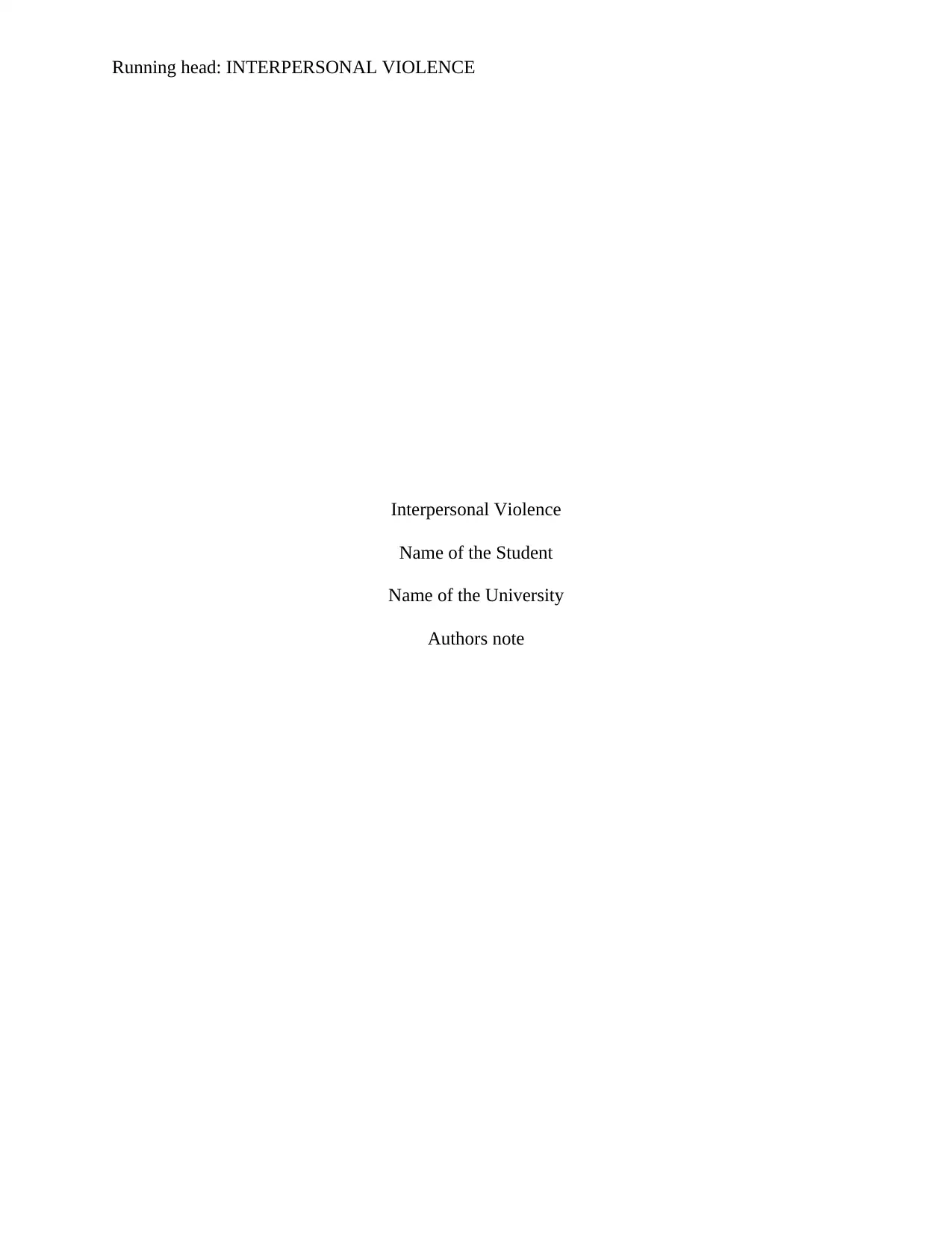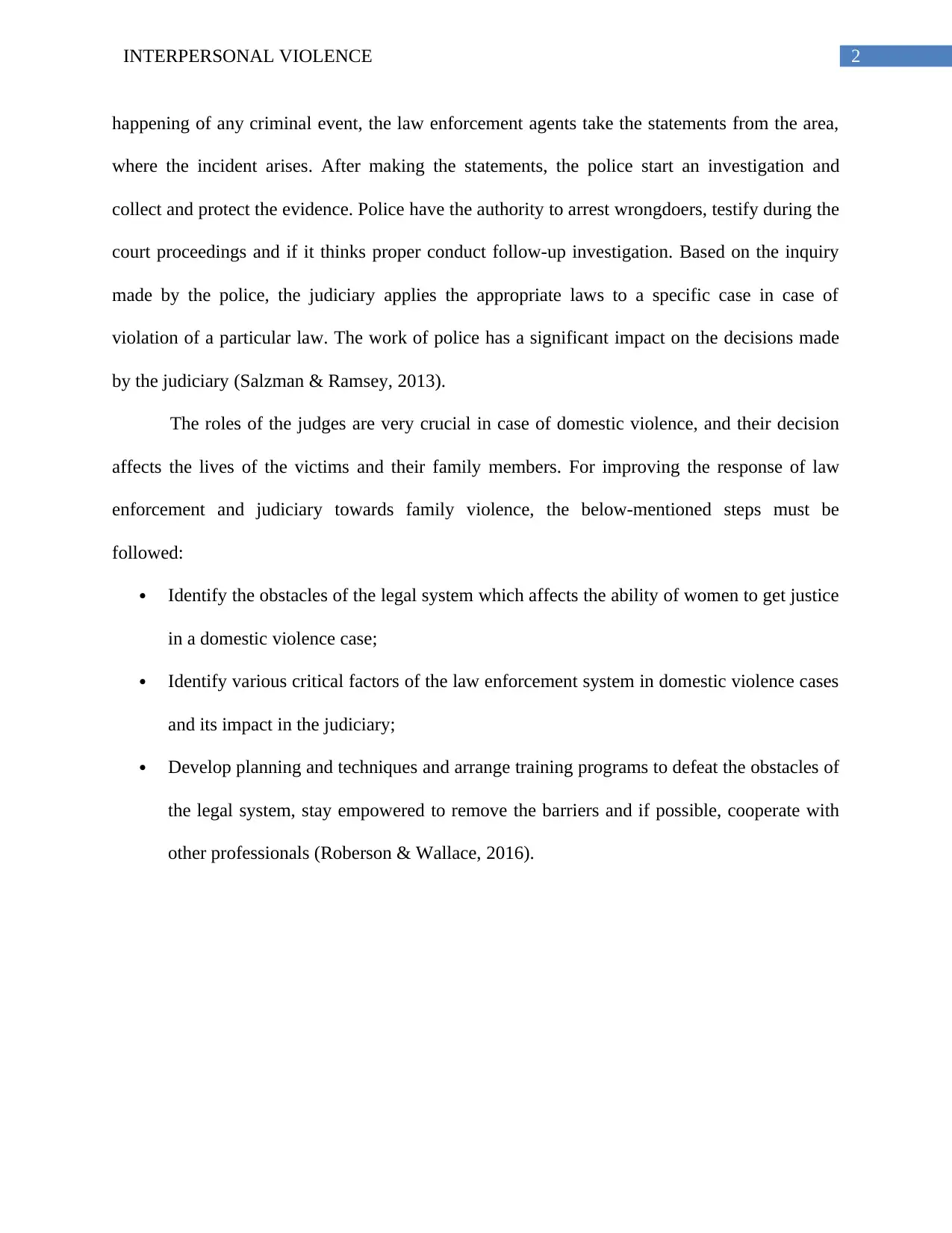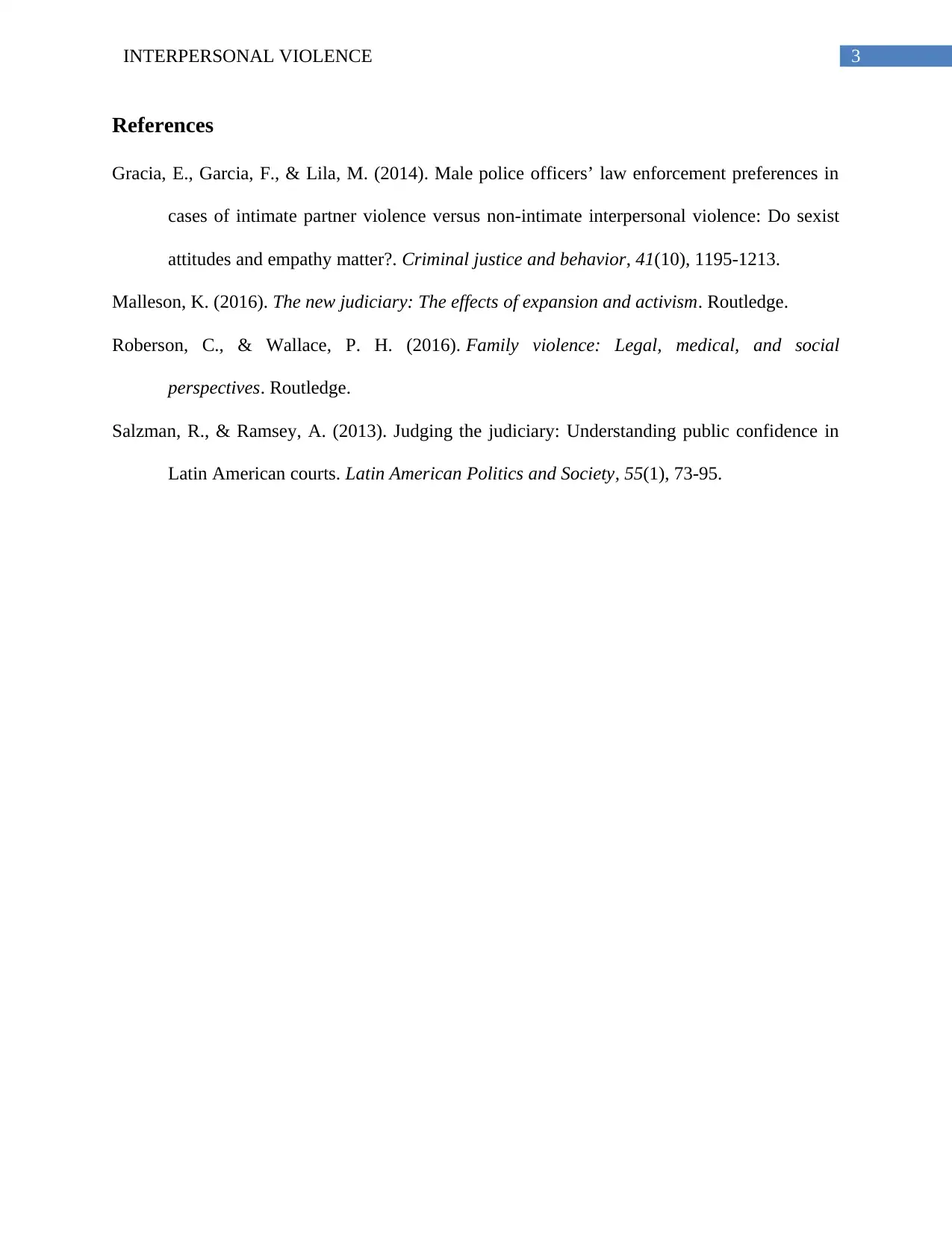Law Enforcement and Judiciary: Domestic Violence Response Analysis
VerifiedAdded on 2022/09/12
|5
|786
|24
Essay
AI Summary
This essay examines the roles of law enforcement and the judiciary in domestic violence cases. It identifies key actors within the law enforcement system and analyzes how their work impacts the judiciary's decisions. The essay explores the importance of police response in domestic violence situations, highlighting the need for improved practices to bridge the gap between victims and justice. It emphasizes the critical roles of judges and the need for collaborative efforts between law enforcement and the judiciary to improve their response to family violence. The essay suggests actionable steps to overcome legal system obstacles, improve law enforcement practices, and promote cooperation with other professionals to ensure better outcomes for victims of domestic violence. It also mentions that the laws, departments, and processes for conducting criminal justice are not similar in all jurisdictions and that the state criminal justice arrangement and federal criminal justice arrangement are the two categories of criminal justice arrangement.
1 out of 5












![[object Object]](/_next/static/media/star-bottom.7253800d.svg)